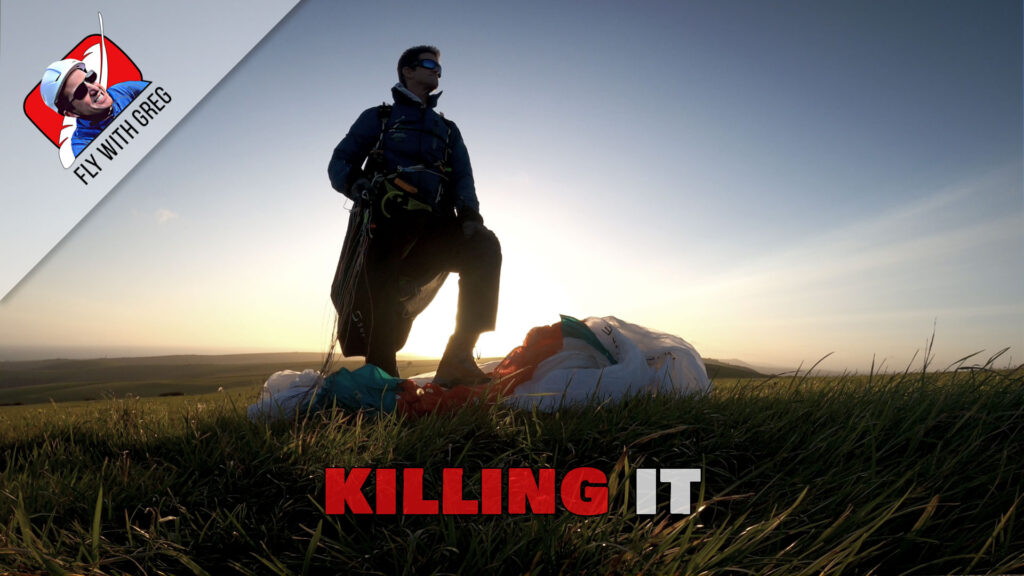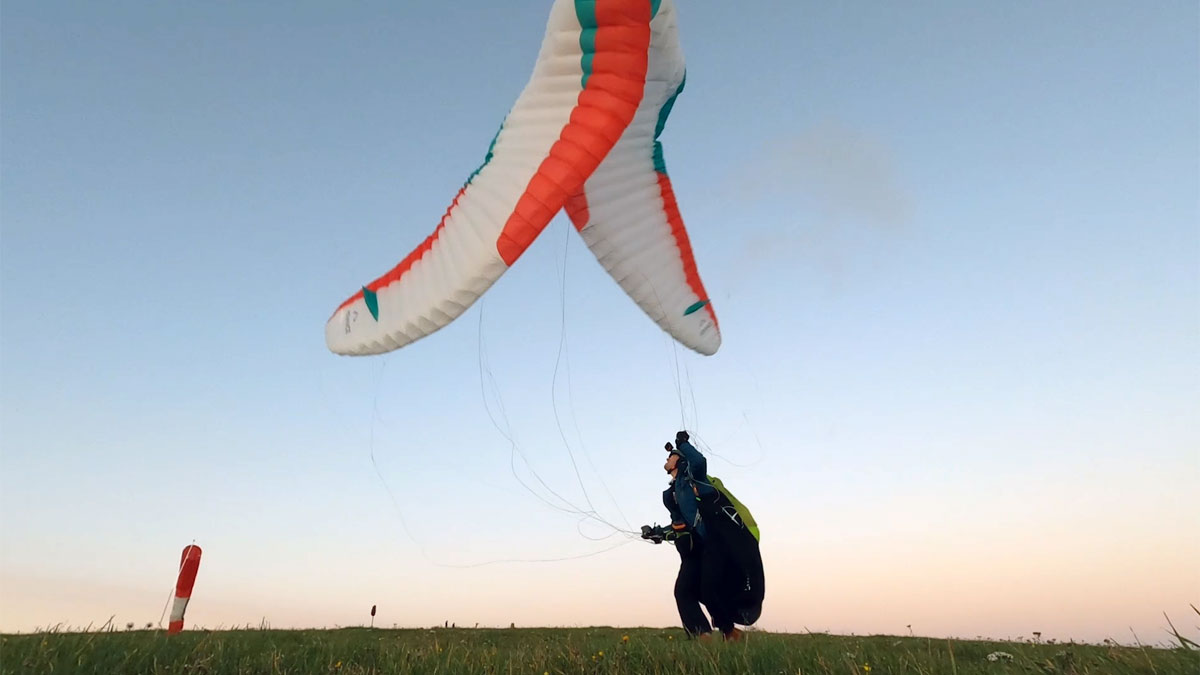The paraglider is a big wing that generates a lot of power. It’s easy to get hurt when the wind is strong, but if you know the right methods you can kill it! This means disabling the aerofoil so you can take it from a flying position to a controlled stop.
If you hesitate or have no plan when you land in strong wind, the wing will be pushed back into a ‘spinnaker position’ which generates drag and can pull you into obstacles. This is very dangerous and hard to stop, so it’s important to have a practiced technique, and a plan to use it.
Here are some key principles when killing your wing:
Land using the rear risers
Not all wings are good on rear risers, so you must test it out in moderate winds. But most wings can be directed in to a landing using the rear risers instead of the brakes. In strong wind, you will have very little ground speed, so a brake flare is unnecessary. With the rear risers already in your hands from fairly high up, it takes no time to pull them down as you run towards the wing. The rear risers usually disable a wing faster while producing less power, and they can keep it pinned down more effectively.
Run towards the wing first
Pilots usually fight the wing because it pulls so hard, or hesitate because their usual ‘turn to face the wing’ is confusing when moving backwards. Keep moving towards the wing and you reduce the power. If you run before it starts to pull you and before you pull the brakes or rear risers, you gain even more control. This is very important to remember when landing under a reserve parachute. You have a split second to get ahead of the power. Once you’re being dragged, control becomes difficult.
Run past the wing
If you keep following the wing it will reinflate as soon as you stop moving. Try to run at an angle, past the wing on one side or the other with the lines at full stretch, which will rotate the wing parallel to the wind. If you find this impossible, you can pull in one rear riser and lines or wrap the brake on one side while running downwind.
Pin down the upwind wingtip
I don’t normally like to kneel on a wing, but this is one situation where I care more about my own skin. Gather some fabric at the wingtip to prevent the other wingtip from rising (on the end of tensioned lines.) If you roll this side towards the middle, it will fully disable the wing, allowing you to unclip.
Keep the wing to the uphill side
If you’re landing on a slope with a crosswind, bias your inputs towards the hill. Pull your riser ‘into the slope’ to tip the wing to the safe side first, before depowering.
Use vegetation to your advantage
You can be dragged fast on open terrain like roads or riverbeds. Ploughed fields are usually softer, but low scrub is best. This creates some wind shelter at ground level. The ‘Karoo Velcro’ has saved many a record-hunter in South Africa: low thorny scrub that grabs a wing and doesn’t let go.
Learn the full frontal collapse
This method requires practice and full commitment, but it is the most effective kill switch on many wings. It works by giving the wing a surge of acceleration during the take-down by pulling on the A risers, so you have the least drag-force to deal with, and a long moment to turn and run towards the wing while doing part 2: wrapping the brakes or pulling rear risers. The mistake most pilots make is they forget the second part, so the wing bangs open and reflies.

Watch the complete demonstration of all these techniques in KILLING IT which is part of my Ground Control online paragliding course. There are so many vital skills like this one that are left out of the common paragliding training syllabus. You need to know this!
Learn step by step and get all the gaps filled in so you are completely prepared for cross country flying … and beyond! Join a great community of like-minded pilots who enjoy learning and discover the path to confidence in the air.

